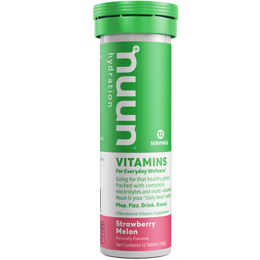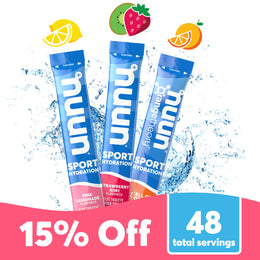Training Through Pregnancy

By Sara Colangelo
Rejoice athletic moms-to-be! The American Medical Community is finally behind prenatal exercise for the majority of pregnancies. Exercising while pregnant is known to: improve or maintain cardiovascular fitness; lift your mood; ward off gestational diabetes and hypertension; fight fatigue; decrease body discomfort and excess weight gain as pregnancy progresses; and prepare your body for an easier labor. Yes, please!
Pregnancy is not the time to take up new activities (except maybe prenatal yoga – I’m now a convert!) But with certain adjustments, many training routines can be continued while cooking your little bun in the oven. Below are some common activities and modifications that I’ve discussed with my doctor and tried myself!
Running
- Mentally ditch the pace goals and instead aim for an effort that allows you to comfortably carry on a conversation.
- You may feel breathless just walking at times during pregnancy – and if you’re like me and suffer from exercise induced asthma already, expect this to become more pronounced during pregnancy. So if you don’t want to cut your training session too short, try alternating a mile running with a mile walking to keep your heart rate and breathing comfortable.
- Once 20 weeks hits, your center of gravity has appreciably changed, and so has your balance. Further, the hormones relaxin and estrogen make for one relaxing cocktail for the ligaments supporting your joints. Great for labor, bad for your running gait – you can become more prone to falls or other musculoskeletal injuries. So use extra caution when choosing your running surface and listen to your body if it starts to feel out of alignment.
- At some point you may decide it’s better to preserve your pelvic floor muscles over your running fitness – and who can blame you. Enter the elliptical! Or try water running (I can’t bring myself to call it “aqua jogging”)! Grab a floatie belt and head to the deep end. The trick is to mimic your actual running form and cadence, while making sure you don’t lean forward too much – a temptation in the water.
Swimming
- Hurrah triathletes and swimmers! Swimming is considered one of the safest and most beneficial forms of exercise during pregnancy.
- Again, forget any pace or even duration expectations. Focus on feeling weightless (even if just for a few precious minutes!) And stretching out in the water. Aim for around 30 minutes of swim time – some days you’ll surprise yourself and blow that out of the water …. Other days the body may tell you to end early.
- Try using your pregnancy to work on swim technique. Yes body balance may be different, but how about finally focusing on tweaking your catch, stroke rate, high elbow, or finish while you’re less concerned about speed.
- Mix in paddles and/or a pull buoy for extra work on your arms, shoulders, and lats. Add in some kick sets to get a low impact boost for your leg muscles and that all important circulation.
- But don’t be surprised if you find yourself taking more frequent rest breaks at the wall - by the second trimester the heart can work 40% harder to pump your increased blood volume. So remember to breathe easy between sets!
Cycling
- Some women choose to head straight indoors when they see the plus sign, feeling a bit more risk adverse when it comes to taking your ride outside. Regardless of how you feel at the start of your pregnancy, by 20 weeks your balance is off and your joints are on their way to relaxing. So it’s time to make the indoor option your only option.
- Let go of power numbers, or your previous target gear in spin class. Instead, focus on enjoying the time with the friend on the bike next to you, or getting to binge on tv shows you may never have time to watch once baby arrives.
- Try building leg strength with low cadence/higher gear sets on the bike. This will keep your heart rate down while you still feel a burn in the legs. If you reach a point where you can’t speak in full sentences, then take a break and spin easy.
- If you’re on a road or tri bike on the trainer at home (i.e. One in which you’re not able or willing to make changes to saddle or cockpit height) use a thick towel to “raise” the cockpit so you don’t have to bend forward quite as far over that growing belly.
- Consider switching from your favorite pair of cycling shorts, which may soon become too constrictive, to a pair of bib shorts. Bib shorts happen to have a design that allows for a bulging belly and actually provide some support while you cycle! I’m getting very good at stealing my husband’s bibs before they make it from the clean laundry pile to his drawers.
Taking the trainer outside to get a better view!
Strength training
- Strength training is still encouraged during pregnancy, and it can be especially helpful for avoiding back pain as you progress.
- Traditional weight machines at the gym or home can be used as long as you’re not trying to set any records. But many pregnant women opt for resistance bands and/or body weight for a safer alternative.
- I try to think of pregnancy as allowing me to focus on all the little things i tend to ignore during triathlon season. So i have focused my weight training during pregnancy as a way to stabilize and strengthen those muscles that support the swim/bike/run forward motion: e.g. Hips, adductors, glutes, all sorts of rotator cuff work, etc.
- Keep in mind these safety precautions: avoid exercises while lying flat on your back (your growing abdomen can compress a large vein delivering blood back to the heart) and remember to use proper breathing and lifting technique!
Hydration
- As the Nuuniverse would say – stay hydrated! It’s more critical now than ever. Hydration plays a key role in transporting nutrients and other goodies to baby, so keep the water bottle handy before, during, and after you exercise.
- Robust hydration is also known to help stave off pregnancy nasties like fatigue, constipation, sluggish circulation, UTIs, and headaches.
- To stimulate your body’s desire to drink more (you need 12-13 glasses/day when pregnant according to the Institute of Medicine), try sipping an electrolyte beverage. I can recommend one if you need it. *wink wink nudge nudge*
Before trying any of the activities above or other exercise program, check in with your doctor - while most women can live an active lifestyle while pregnant (or during portions of pregnancy) there are many reasons why you may need to be extra cautious or stay away from particular activities. I also encourage you to be as detailed as possible with your provider – for example, tell your doctor what *you* mean by “I’m a runner” – he or she may have a very different conception of what that entails. Enjoy the opportunity to get on the same page with your doctor about exactly what types of exercise you’d like to do, what is appropriate, and when to call with concerns. And no matter what activity you’re tackling, watch for the following signs to stop and seek medical attention: dizziness or feeling faint; prolonged or severe pain; unusual shortness of breath; bleeding; cramping or of course, contractions.
*Sara is a proud Nuunelite athlete and Co-Founder of Speed Sherpa: Mindful Coaching. Much like her husband Dave (Speed Sherpa’s head coach), Sara grew up a competitive swimmer. She played division 1 water polo in college and was an academic All-American. She is also a hall of fame inductee with her high school’s New England Championship winning volleyball team. After a decade away from any sports after college, Sara discovered triathlon. She has been competing for four seasons and is a consistent podium threat in her age group. Sara and Dave live in Northern Virginia, but their triathlon club encompasses athletes across the country. You can connect with them and follow Sara’s fit pregnancy journey over Instagram, Twitter, or Facebook!


































